Potato bag gardening: Ever dreamt of harvesting a bounty of homegrown potatoes, even if you’re short on space? I know I have! Forget sprawling fields; this ingenious DIY method lets you cultivate delicious spuds right on your patio, balcony, or even a sunny corner of your apartment.
The beauty of potato bag gardening lies in its simplicity and adaptability. While container gardening, in general, has been practiced for centuries, offering a way to grow food in urban environments and challenging climates, the potato bag method specifically gained popularity as a space-saving and efficient technique. It’s a modern twist on traditional gardening, perfect for today’s busy lifestyles and smaller living spaces.
Why should you embrace this DIY trick? Well, imagine the satisfaction of digging into a bag overflowing with freshly grown potatoes – the taste is simply unmatched! Plus, potato bag gardening is incredibly rewarding. It’s a fantastic way to connect with nature, learn about the growing process, and enjoy the fruits (or rather, vegetables!) of your labor. More importantly, it’s a solution for those of us who lack the space for a traditional garden but still crave the taste of homegrown goodness. I’m excited to share these simple steps to help you get started!
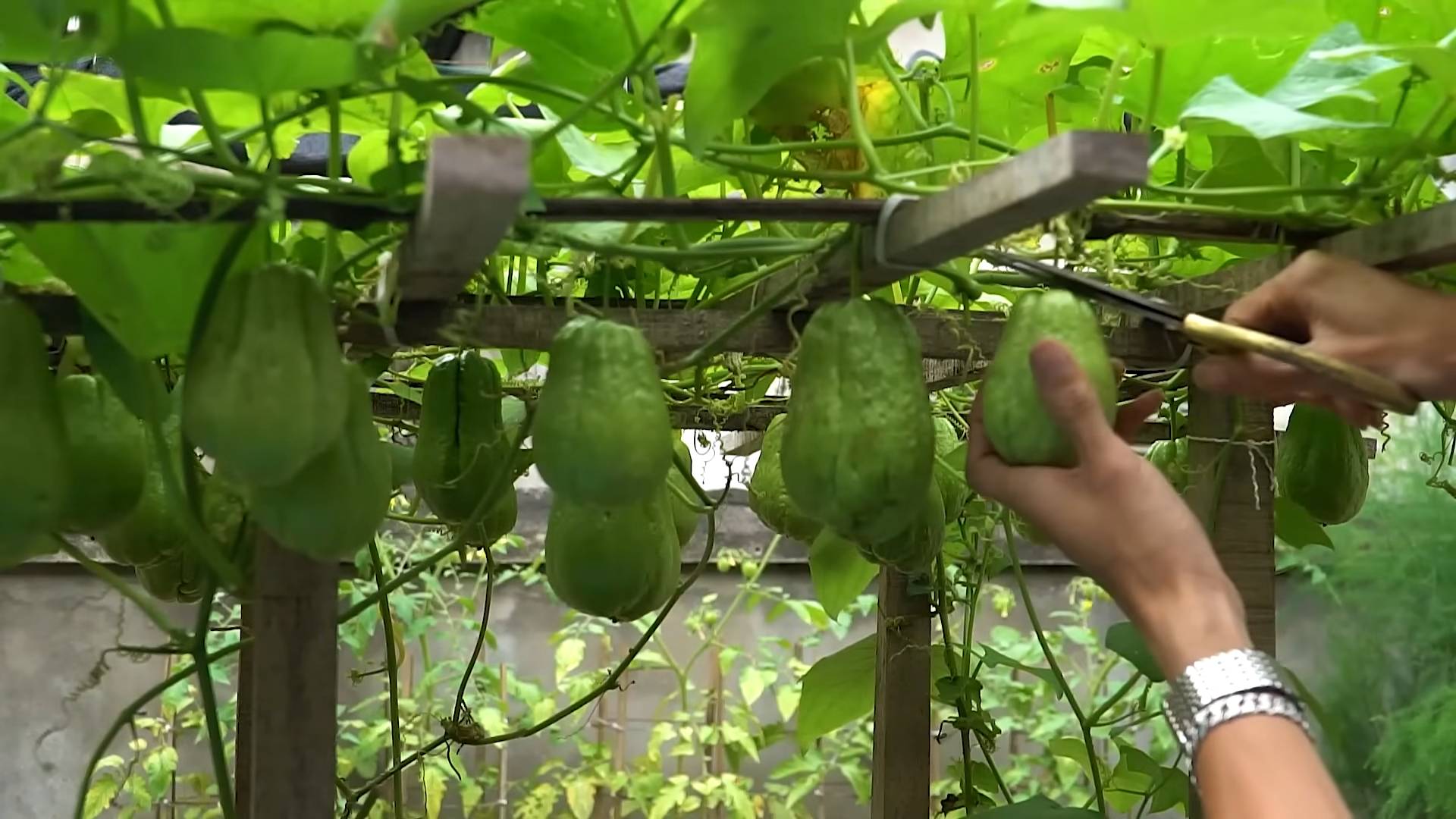
DIY Potato Bag Gardening: Grow Your Own Spuds in Style!
Hey there, fellow gardening enthusiasts! Are you short on space but dreaming of harvesting your own potatoes? Well, I’ve got the perfect solution for you: potato bag gardening! It’s a fun, easy, and surprisingly productive way to grow potatoes, even if you only have a balcony or small patio. I’ve been doing this for years, and I’m excited to share my secrets with you. Get ready to dig in (pun intended!) and learn how to create your own potato paradise in a bag.
What You’ll Need
Before we get started, let’s gather our supplies. This is a pretty straightforward project, so you probably have a lot of these items already.
* Large, sturdy bag: Think burlap sacks, heavy-duty plastic gardening bags (the kind you get soil in are perfect!), or even old feed bags. The bigger, the better – aim for at least 15-20 gallons. Make sure it has drainage holes! If not, we’ll add some.
* Seed potatoes: These aren’t just any potatoes from the grocery store! Seed potatoes are specifically grown for planting and are certified disease-free. You can find them at your local garden center or online. Choose a variety you love to eat!
* Potting soil: A good quality potting mix is essential. Avoid using garden soil directly, as it can be too heavy and compact in a bag.
* Compost: This is “black gold” for your potatoes! Compost provides essential nutrients and helps retain moisture.
* Optional: Straw or hay mulch. This helps retain moisture, suppress weeds, and keep the soil cool.
* Watering can or hose: For keeping your potato plants happy and hydrated.
* Gardening gloves: To keep your hands clean and protected.
* Scissors or knife: For cutting drainage holes (if needed).
Preparing Your Potato Bag
Okay, let’s get our hands dirty! The first step is prepping our bag for its potato-growing adventure.
1. Choose your location: Potatoes need at least 6-8 hours of sunlight per day, so pick a sunny spot for your bag. Make sure it’s also easily accessible for watering.
2. Drainage is key: If your bag doesn’t already have drainage holes, now’s the time to add them. I usually cut several small slits or holes in the bottom of the bag, about an inch or two apart. This prevents the soil from becoming waterlogged, which can lead to rot.
3. Roll down the sides: Roll down the top edges of the bag a few times. This will make it easier to add soil and plant your potatoes. You can unroll it later as the plants grow.
4. Add the first layer of soil: Fill the bottom of the bag with about 4-6 inches of potting soil mixed with compost. I usually go for a 2:1 ratio of potting soil to compost. This creates a nutrient-rich base for your potatoes to grow.
Planting Your Seed Potatoes
Now for the fun part – planting those seed potatoes!
1. Chitting (optional but recommended): Chitting is the process of encouraging your seed potatoes to sprout before planting. This gives them a head start and can result in an earlier harvest. To chit your potatoes, place them in a cool, bright location (but not direct sunlight) for a few weeks. You’ll see small green sprouts, called “eyes,” emerging from the potatoes.
2. Cut large seed potatoes: If your seed potatoes are large (bigger than an egg), you can cut them into smaller pieces. Make sure each piece has at least one or two “eyes.” Let the cut pieces dry for a day or two before planting to prevent rot.
3. Plant the seed potatoes: Place the seed potatoes on top of the soil layer, with the “eyes” facing upwards. Space them about 8-12 inches apart. If you’re using smaller seed potatoes, you can plant them whole.
4. Cover with soil: Cover the seed potatoes with another 4-6 inches of potting soil and compost mixture. Gently water the soil until it’s moist but not soggy.
The “Hilling” Process: The Secret to More Potatoes!
This is where the magic happens! “Hilling” is the process of adding more soil to the bag as the potato plants grow. This encourages the plants to produce more potatoes along the buried stems.
1. Wait for growth: After a few weeks, you’ll see green shoots emerging from the soil. Let the plants grow to about 6-8 inches tall.
2. Add more soil: Once the plants reach that height, it’s time to “hill” them. Add another layer of potting soil and compost mixture, covering the stems up to about halfway. Leave the top leaves exposed.
3. Repeat the process: Continue to “hill” the plants every few weeks as they grow taller. Each time, add more soil and compost, leaving only the top leaves exposed. You can unroll the sides of the bag as needed to accommodate the growing plants and soil.
4. Mulch (optional): Once the plants are well-established, you can add a layer of straw or hay mulch to the top of the soil. This will help retain moisture, suppress weeds, and keep the soil cool.
Caring for Your Potato Plants
Now that your potatoes are planted and growing, it’s important to provide them with the care they need to thrive.
1. Watering: Potatoes need consistent moisture, especially during hot weather. Water deeply whenever the top inch of soil feels dry to the touch. Avoid overwatering, as this can lead to rot.
2. Fertilizing: While compost provides a good base of nutrients, you may want to supplement with a balanced organic fertilizer. Follow the instructions on the fertilizer package.
3. Pest control: Keep an eye out for pests like aphids, potato beetles, and flea beetles. You can usually control these pests with organic methods, such as hand-picking, insecticidal soap, or neem oil.
4. Sunlight: Remember, potatoes need at least 6-8 hours of sunlight per day. If your bag is in a shady spot, consider moving it to a sunnier location.
Harvesting Your Potatoes
The moment we’ve all been waiting for – harvest time!
1. When to harvest: You can start harvesting “new potatoes” (small, tender potatoes) about 7-8 weeks after planting. These are delicious boiled or roasted. For larger, mature potatoes, wait until the plants start to flower and the foliage begins to die back. This usually takes about 10-12 weeks.
2. How to harvest: The easiest way to harvest potatoes from a bag is to simply dump the bag out onto a tarp or other surface. Then, carefully sift through the soil and collect your potatoes. You can also reach into the bag and gently dig around for potatoes, but be careful not to damage them.
3. Curing (optional): If you plan to store your potatoes for a longer period, you’ll need to cure them. To cure potatoes, spread them out in a cool, dark, and well-ventilated place for about a week. This allows the skins to harden and helps prevent rot.
4. Storage: Store cured potatoes in a cool, dark, and dry place, such as a root cellar or basement. Avoid storing them near apples or onions, as these can cause them to sprout prematurely.
Troubleshooting
Even with the best planning, sometimes things don’t go exactly as expected. Here are a few common problems you might encounter and how to deal with them:
* Potato blight: This fungal disease can cause brown spots on the leaves and stems. To prevent blight, choose disease-resistant potato varieties and avoid overhead watering. If you see signs of blight, remove the affected foliage immediately.
* Rot: Rot can be caused by overwatering or poor drainage. Make sure your bag has adequate drainage holes and avoid watering too frequently.
* Pests: As mentioned earlier, keep an eye out for pests and take action to control them as needed.
Potato Varieties to Consider
Choosing the right potato variety can make all the difference in your bag gardening success. Here are a few of my favorites:
* Yukon Gold: A classic all-purpose potato with a buttery flavor and smooth texture.
* Red Norland: A good choice for boiling or roasting, with a slightly sweet flavor.
* fingerling: These small, elongated potatoes have a unique flavor and texture.
* Purple Majesty: A visually stunning potato with purple skin and flesh.
Beyond the Bag: Other Container Gardening Ideas
Once you’ve mastered potato bag gardening, why not try growing other vegetables in containers? Tomatoes, peppers, cucumbers, and herbs all thrive in pots and containers. Container gardening is a great way to maximize your growing space and enjoy
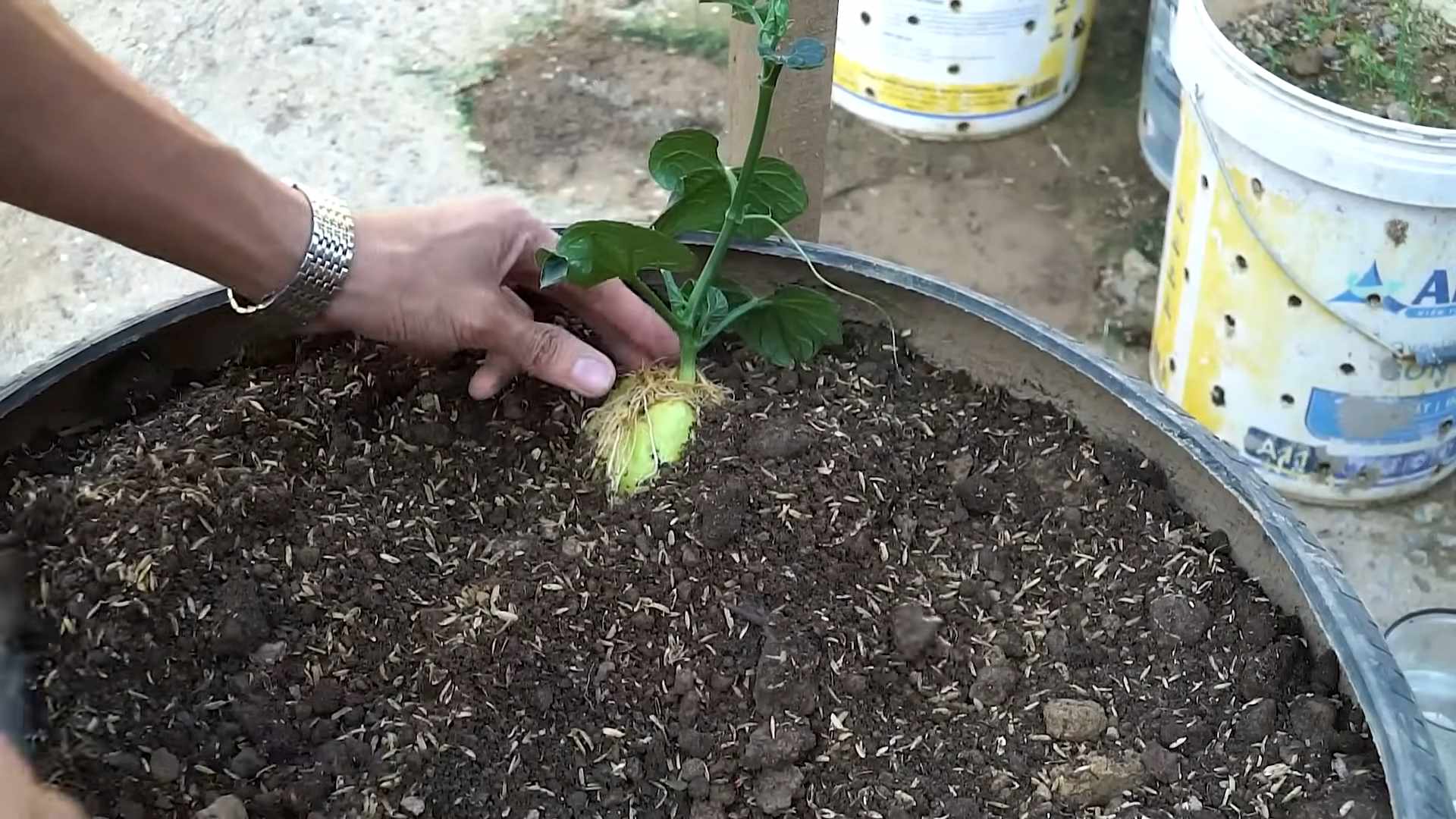
Conclusion
So, there you have it! Potato bag gardening: a simple, space-saving, and incredibly rewarding way to grow your own delicious potatoes, even if you only have a balcony or small patio. This method isn’t just about convenience; it’s about connecting with the earth, understanding where your food comes from, and enjoying the unparalleled taste of freshly harvested, homegrown potatoes.
Why is this DIY trick a must-try? Because it democratizes gardening. It removes the barriers of needing a large plot of land or extensive gardening knowledge. Anyone can do it, and the results are consistently impressive. Imagine the satisfaction of digging into a bag and unearthing a bounty of potatoes you nurtured from a single seed potato. It’s an experience that’s both grounding and exhilarating.
Beyond the basic method, there’s plenty of room for experimentation. Try different varieties of potatoes to discover your favorites. Russets, Yukon Golds, fingerlings – each offers a unique flavor and texture. Consider adding companion plants like marigolds or basil to your potato bag to deter pests and attract beneficial insects. You can also experiment with different soil mixes to find what works best for your local climate and potato variety. A well-draining mix is crucial, so don’t be afraid to amend your soil with perlite or vermiculite.
For those looking to take their potato bag gardening to the next level, consider using organic fertilizers like compost tea or worm castings to nourish your plants. These natural amendments will not only boost your potato yield but also improve the overall health of your soil. You can also try succession planting, starting new bags every few weeks to ensure a continuous harvest throughout the growing season.
Don’t be intimidated by the process. Potato bag gardening is incredibly forgiving. Even if you make a few mistakes along the way, you’re likely to still end up with a decent harvest. The key is to pay attention to your plants, water them regularly, and provide them with plenty of sunlight.
We wholeheartedly encourage you to give potato bag gardening a try. It’s a fun, educational, and ultimately delicious experience. And once you’ve harvested your first crop of homegrown potatoes, we’d love to hear about it! Share your experiences, tips, and photos with us in the comments below. Let’s build a community of potato bag gardeners and learn from each other. What varieties did you grow? What challenges did you face? What successes did you celebrate? Your insights can help others discover the joy of growing their own food. So, grab a bag, some soil, and a few seed potatoes, and get ready to embark on a rewarding gardening adventure! Happy growing!
Frequently Asked Questions (FAQ)
What kind of bag should I use for potato bag gardening?
The ideal bag is a large, sturdy container made of breathable material. Burlap sacks, grow bags specifically designed for potatoes, or even repurposed feed bags work well. The bag should be at least 2 feet in diameter and 2-3 feet tall to allow ample room for the potato plants to grow and produce tubers. Avoid using plastic bags, as they don’t allow for proper drainage and can lead to root rot. If you must use a plastic bag, be sure to poke plenty of drainage holes in the bottom.
How many seed potatoes can I plant in one bag?
Generally, you can plant 2-3 seed potatoes in a single bag, depending on the size of the bag and the variety of potato. If you’re using a smaller bag, stick to just one or two seed potatoes. Space the seed potatoes evenly around the bottom of the bag, ensuring they have enough room to develop. Overcrowding can lead to smaller potatoes and reduced yields.
What kind of soil should I use for potato bag gardening?
Potatoes need well-draining soil that is rich in organic matter. A good mix would be equal parts compost, garden soil, and perlite or vermiculite. The compost provides nutrients, the garden soil provides structure, and the perlite or vermiculite improves drainage and aeration. Avoid using heavy clay soil, as it can become waterlogged and inhibit potato growth. You can also purchase pre-mixed potting soil specifically formulated for vegetables.
How often should I water my potato bag?
Water your potato bag regularly, especially during hot and dry weather. The soil should be consistently moist but not waterlogged. Check the moisture level by sticking your finger into the soil. If the top inch or two feels dry, it’s time to water. Avoid overwatering, as this can lead to root rot. A good rule of thumb is to water deeply every few days, allowing the excess water to drain out of the bottom of the bag.
How much sunlight do potato plants need?
Potato plants need at least 6-8 hours of direct sunlight per day to thrive. Choose a location for your potato bag that receives plenty of sunlight throughout the day. If you live in a particularly hot climate, some afternoon shade may be beneficial to prevent the plants from overheating.
When should I start “hilling” my potato plants?
Start hilling your potato plants when the stems are about 6-8 inches tall. Add a few inches of soil to the bag, covering the lower portion of the stems. This encourages the plants to produce more potatoes along the buried stems. Continue hilling every few weeks as the plants grow, until the bag is nearly full.
How do I know when my potatoes are ready to harvest?
Potatoes are typically ready to harvest when the plants begin to flower or when the foliage starts to turn yellow and die back. You can harvest “new potatoes” (small, immature potatoes) a few weeks after flowering. For larger, mature potatoes, wait until the foliage has completely died back. To harvest, simply tip the bag over and carefully dig through the soil to unearth your potatoes.
What are some common pests and diseases that affect potato plants?
Common pests that can affect potato plants include aphids, potato beetles, and flea beetles. Diseases include early blight, late blight, and potato scab. To prevent pests and diseases, choose disease-resistant potato varieties, practice good sanitation, and monitor your plants regularly. If you notice any signs of pests or diseases, take action promptly to control them. Organic pest control methods, such as insecticidal soap or neem oil, can be effective for controlling many common pests.
Can I reuse the soil from my potato bag?
Yes, you can reuse the soil from your potato bag, but it’s important to amend it with fresh compost and other organic matter to replenish the nutrients. You may also want to sterilize the soil to kill any potential pests or diseases. You can do this by baking the soil in the oven at 200 degrees Fahrenheit for 30 minutes or by solarizing it in a black plastic bag for several weeks.
What if my potato plants don’t flower?
Not all potato varieties flower, so the absence of flowers doesn’t necessarily mean that your plants aren’t producing potatoes. Focus on the overall health of the plants and monitor the foliage for signs of maturity. If the foliage starts to turn yellow and die back, it’s likely that your potatoes are ready to harvest, even if the plants didn’t flower.

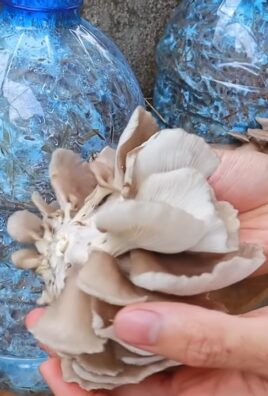
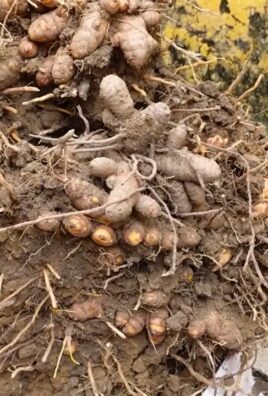
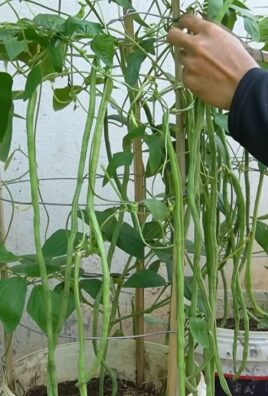
Leave a Comment